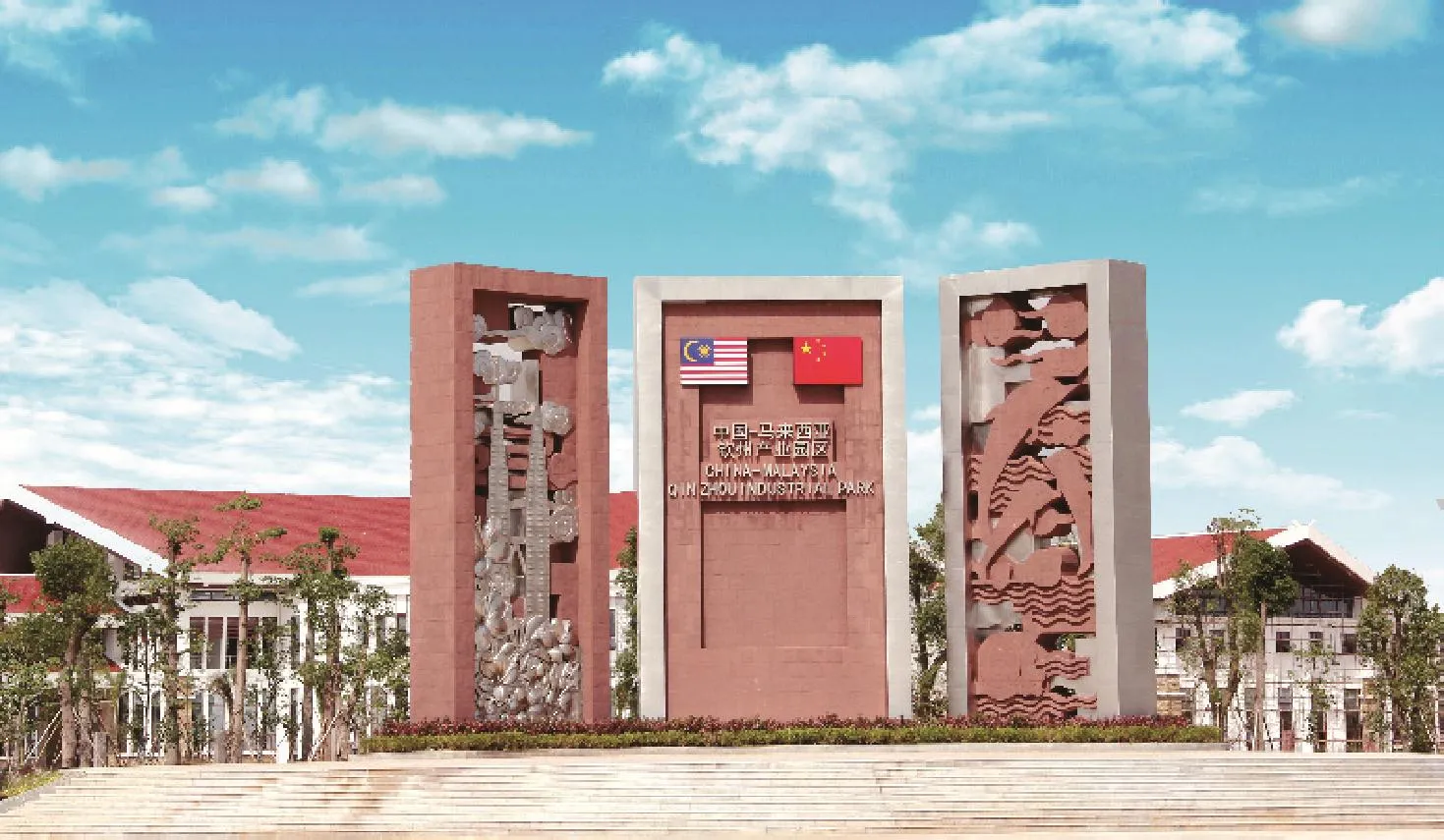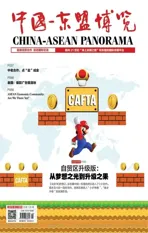Fusion of Industry and City: An “Ice-breaking“ Road to the Development of Industrial Parks
2016-04-11writtenbyChenLibingtranslatedbyXuZhiliang
written by Chen Libing / translated by Xu Zhiliang
Fusion of Industry and City: An “Ice-breaking“ Road to the Development of Industrial Parks
written by Chen Libing / translated by Xu Zhiliang

China-Malaysia (Qinzhou) Industrial Park

Nanning ASEAN High School in Guangxi-ASEAN Economic and Technological Development Zone
Industry serves as the foundation as well as impetus for Beibu Gulf Economic Zone (BGEZ). The 14 key industrial parks, after years of development, have initially formed the distinctive industry system. However, the extensive and single development pattern of these industrial parks cannot satisfy the requirements of economy at present. In this context, many industrial parks regard the fusion of industry and city as a new mode of transformation and upgrading.
Integration of Functional Orientation and Urban Development Fusion of industry and city refers to holding industrial space and developing industrial economy based on cities, as well as promoting urban renewal and service supporting improvement, and thereby to form a new pattern industry park or even new urban district featured by multifunction and symbiotic complex by organically incorporating production life-support services such as dwelling, commerce, ecology, culture, relaxation, and entertainment into the development of industrial parks.
And in this process, the development orientation of industrial parks, especially the selection and layout of industries, should be consistent with their projectsbased cities and towns to form their own catching features, which will help achieve the development visions of industrial parks. According to the Director of Institute of Industrial Economics of Guangxi Academy of Social Sciences Yao Hua, when facing the “new normal”, what industrial parks have to carefully consider are to guide the existing enterprises to complete their optimization, upgrading and transformation, bring in the emerging industries to improve the strategic industrial distribution, and also highlight factors and effects of circular economy so as to conform more to the relevant national policies.
Take China-Thailand Chongzuo Industrial Park for example, Chongzuo as the project-based city is the most convenient and fast land access from China to ASEAN, which is also known as the “Sugar City” and “Manganese City” of China. Given this, Chongzuo has positioned itself as a modern regional hub city as well as an ecological city in the southwest of Guangxi in accordance with its urban planning, which is characterized by border trade,border tourism, Chinese Zhuang nationality culture and Chinese landscape garden. For this reason, the industrial park set the goal of building itself into a demonstration area for the industrial cooperation between Thailand and China, aimed at developing the leading industry such as circulating sugar and food manufacturing, as well as elaxation and tourism.
As of now, there are 8 well-known enterprises like COFCO, Mitr Phol Sugar Group entering into the industrial park, and 33 construction projects with the total planned investment of 13.435 billion yuan. Besides, an industrial avenue (22 kilometers) has been completed.
Interaction of Commercial Industry and Livable City
During the period of fusion of industry and city, transforming from the pure commercial advantages to the integration of commercial industry and livable city is a significant mode to invigorate the development of industrial parks by laying emphasis on ecological environment, cultural landscape, technological innovation, and so on.
Yao also noted that basic public service assurance for migrant workers in the industrial parks should be taken into consideration when mapping out the layout design, such as employee housing, children’s education, medical care, and endowment insurance. Efforts have to be made to create a better development space for migrant workers in the industrial parks in terms of the planning and construction of industrial parks, thus to make industrial parks better incorporated into the urban planning and further facilitate the urbanization.
At present, most of 14 key industrial parks in BGEZ have marched on the journey to the fusion of industry and city. For example, Guangxi-ASEAN Economic and Technological Development Zone, located in the northern suburb of Nanning, Guangxi, was formerly known as China’s largest farm built by overseas Chinese. It, by virtue of its superior geographical location and CAEXPO, is equipped with 4 functional areas: comprehensive industrial park, west area of Nanning education park, tourist resort and modern agricultural demonstration zone. After years of development, three core industrial clusters—food processing, biological medicine and
mechanical machinery—have taken shape; at the same time, famous enterprises such as Budweiser and Ball (America), Sinar Mas Group (Indonesia), and Charoen Pokphand Group (Thailand) have entered the area, giving prominence to the industrial agglomeration effect. Furthermore, the service system in the industrial park, including finance, communication, medical care, education, as well as commerce and trade, has been increasingly improved.
Synchronous and Integrative Progress of Industry and City
China-Malaysia (Qinzhou) Industrial Park set a goal of building itself into a new city characterized by the fusion of industry and city, with the planned population of 500 thousand, and exploring the industrial parks’ capital-oriented development system: set up a development platform containing TFM (Technology, Fund, and Manufacturing & Modern Services) through the integration of relevant technologies, talents and capital, centered on the strategic emerging industries and cross-border service clusters.
China-Malaysia (Qinzhou) Industrial Park has begun to step into a new stage committed to advancing the projects concerning industry and city after three years of development. As of now, the industrial park is basically qualifi ed for the cluster development and the access of industrial projects at any time. Since 2015, Gangqing grease project with an investment of 650 million yuan has been built and put into operation, and the first phase of HEBABIZ with an investment of 900 million yuan has been in trial production. In addition, 5 industrial development platforms—China-ASEAN Botanical Drug & Crude Drug Research and Industrialization Base, Yitonghao Opto-electronics Industrial Park, China-ASEAN Satellite Application Industrialization Base, Hongxin Start-up Workshop, and China-Malaysia S & T Park—have been completed in this industrial park.
Moreover, according to Mr. Gao Pu, Executive Deputy Director of Management Committee of China-Malaysia (Qinzhou) Industrial Park, as the infrastructure is gradually improved, this industrial park is committed to building itself into the 4th generation industrial park, which is favorable for the development of industry, commerce, dwelling, tourism and studying.
